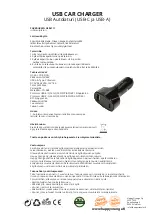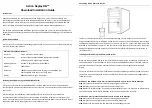
7
2 Mounting
LFR • Two-wire 4 … 20 mA/HART
62270-EN-191108
Fig. 3: Turning by fastening in the centre
2.2 Mounting instructions
Radar sensors for level measurement emit electromagnetic waves.
The polarization is the direction of the electrical component of these
waves.
The polarization direction is marked by a nose on the housing, see
following drawing:
1
Fig. 4: Position of the polarisation
1 Nose for marking the direction of polarisation
Note:
When the housing is rotated, the direction of polarization changes
and hence the influence of the false echo on the measured value.
Please keep this in mind when mounting or making changes later.
When mounting the sensor, keep a distance of at least 200 mm
(7.874 in) from the vessel wall. If the sensor is installed in the center
of dished or round vessel tops, multiple echoes can arise. However,
these can be suppressed by an appropriate adjustment (see chapter
"
Setup
").
If you cannot maintain this distance, you should carry out a false
signal suppression during setup. This applies particularly if buildup on
the vessel wall is expected. In such cases, we recommend repeating
the false signal suppression at a later date with existing buildup.
> 200 mm
(7.87")
Fig. 5: Mounting of the radar sensor on round vessel tops
Polarisation
Installation position






































